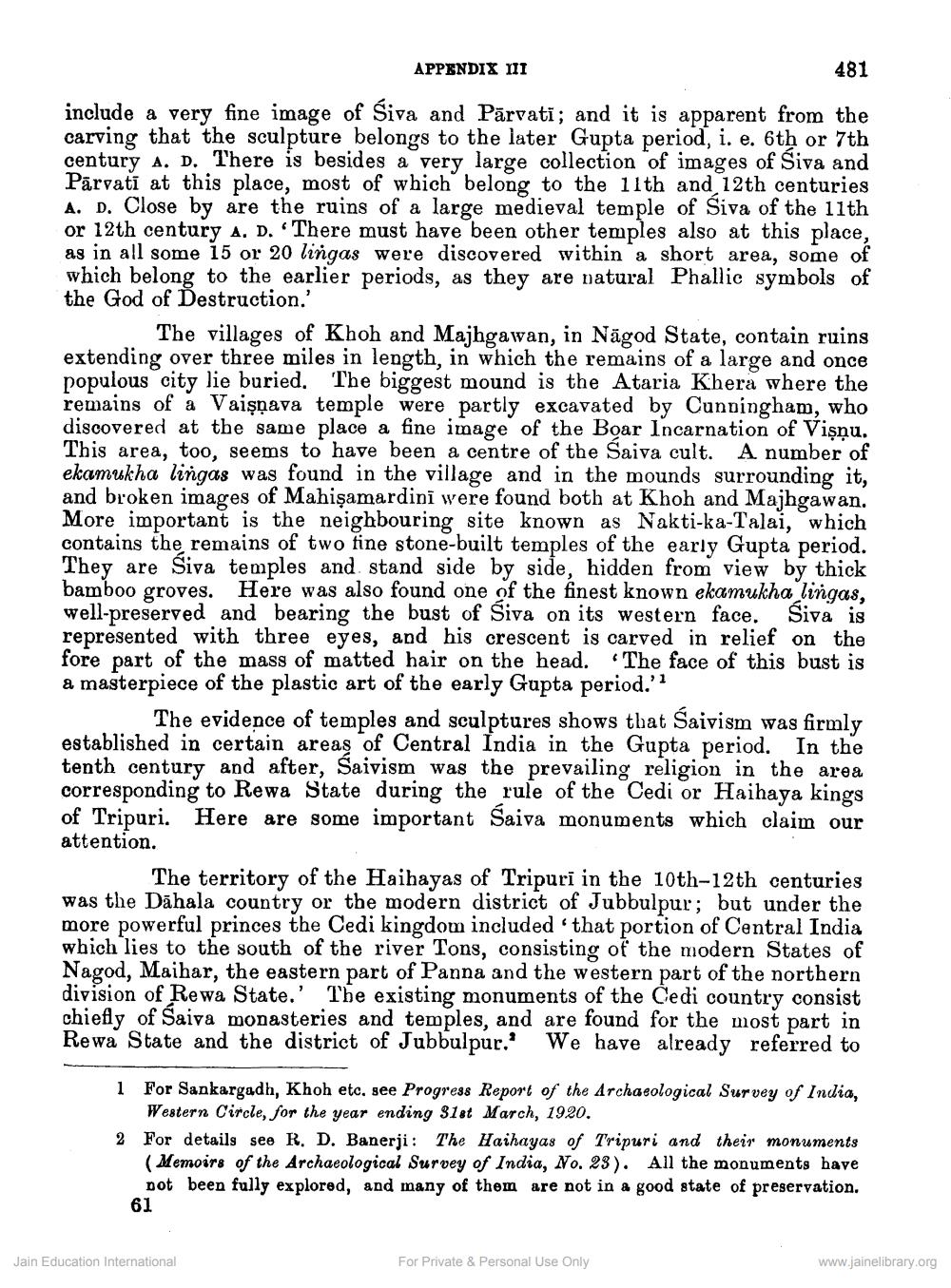________________
APPENDIX III
481
include a very fine image of Siva and Pārvati; and it is apparent from the carving that the sculpture belongs to the later Gupta period, i. e. 6th or 7th century A. D. There is besides a very large collection of images of Siva and Pārvati at this place, most of which belong to the 11th and 12th centuries A. D. Close by are the ruins of a large medieval temple of Siva of the 11th or 12th century A. D. There must have been other temples also at this place, as in all some 15 or 20 lingas were discovered within a short area, some of which belong to the earlier periods, as they are natural Phallic symbols of the God of Destruction.'
The villages of Khoh and Majhgawan, in Nägod State, contain ruins extending over three miles in length, in which the remains of a large and once populous city lie buried. The biggest mound is the Ataria Khera where the remains of a Vaişņava temple were partly excavated by Cunningham, who discovered at the same place a fine image of the Boar Incarnation of Vişņu. This area, too, seems to have been a centre of the Saiva cult. A number of ekamukha lingas was found in the village and in the mounds surrounding it, and broken images of Mahişamardini were found both at Khoh and Majhgawan. More important is the neighbouring site known as Nakti-ka-Talai, which contains the remains of two tine stone-built temples of the early Gupta period. They are Siva temples and stand side by side, hidden from view by thick bamboo groves. Here was also found one of the finest known ekamukha lingas. well-preserved and bearing the bust of Siva on its western face. Siva is represented with three eyes, and his crescent is carved in relief on the fore part of the mass of matted hair on the head. The face of this bust is a masterpiece of the plastic art of the early Gupta period.'
The evidence of temples and sculptures shows that Saivism was firmly established in certain areas of Central India in the Gupta period. In the tenth century and after, Saivism was the prevailing religion in the area corresponding to Rewa State during the rule of the Cedi or Haihaya kings of Tripuri. Here are some important Saiva monuments which claim our attention.
The territory of the Haihayas of Tripuri in the 10th-12th centuries was the Dāhala country or the modern district of Jubbulpur; but under the more powerful princes the Cedi kingdom included that portion of Central India which lies to the south of the river Tons, consisting of the modern States of Nagod, Maihar, the eastern part of Panna and the western part of the northern division of Rewa State.' The existing monuments of the Cedi country consist chiefly of Saiva monasteries and temples, and are found for the most part in Rewa State and the district of Jubbulpur. We have already referred to
1 For Sankargadh, Khoh eto, see Progress Report of the Archaeological Survey of India,
Western Circle, for the year ending 318t March, 1920. 2 For details see R. D. Banerji: The Haihayas of Tripuri and their monuments
(Memoirs of the Archaeological Survey of India, No. 23). All the monuments have
not been fully explored, and many of them are not in a good state of preservation. 61
Jain Education International
For Private & Personal Use Only
www.jainelibrary.org




